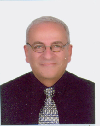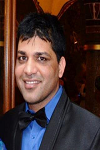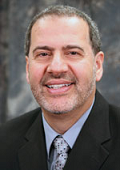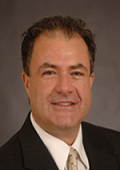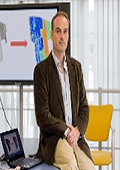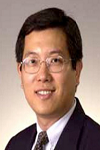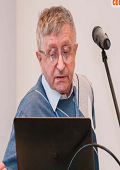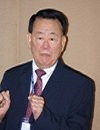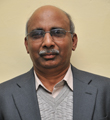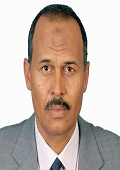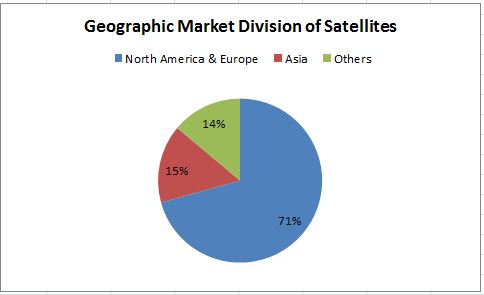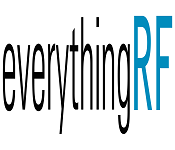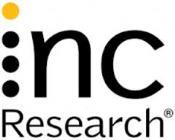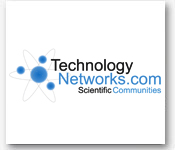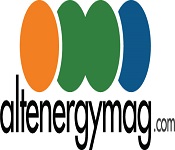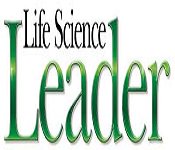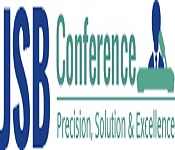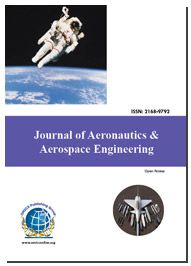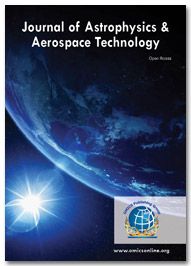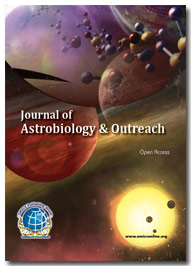
Vladislav Demianov | Professor, Irkutsk State Transport University, Russia | GNSS high-rate data and ionospheric indices efficiency: case study
Vladislav Demianov | Professor, Irkutsk State Transport University, Russia | GNSS high-rate data and ionospheric indices efficiency: case study

Tim Douglas | President, Wasatch Composite Analysis | Advanced Techniques for Design and Analysis of Large Composite Structures
Tim Douglas | President, Wasatch Composite Analysis | Advanced Techniques for Design and Analysis of Large Composite Structures
Theme: Above and Beyond the Earth
Satellite 2019
Conference Series LLC Ltd welcomes you to attend the 5th International Conference and Exhibition on Satellite & Space Missions during August 01-02, 2019 at Dublin, Ireland. The conference is an amalgamation of research professionals from universities, space centres, research labs, spacecraft industries and other space research organizations creating an atmosphere conducive for information exchange between academia and industries. Participating at Satellite 2019 will provide an exceptional opportunity to interact with scientists and research scholars in this fields creating a channel for collaborations and partnerships.
Importance and Scope:
Satellite communication plays a vital role in the global telecommunications system. The satellites are launched into the space to monitor the cloud patterns for the weather prediction, and to send television signals , communication signals. The satellites are used for many applications such as communication, oceanography, astronomy and army surveillance. The communication satellites have the ability to rapidly communicate between a number of widely dispersed locations. The astronomy satellites are mounted on earth orbiting satellites or on the space probes and they can give us an unobstructed view without the interference of earth’s atmosphere. The importance of satellite research is increasing with innovative techniques and advancements, perhaps more approaches need to be developed.
Satellite Meeting aims to bring scientists, space researchers, professors, mechanical engineers, aerospace engineers, business delegates from aeronautical and space related organisations, young researchers and scholars altogether to exchange and share their experiences and research results. It provides a chance to active researchers to explain the recent progress, trends, advancements in the fields of satellite and space research and the solutions they came up with practical problems faced during the phases of research.
Why to attend???
5th International Conference and Exhibition on Satellite & Space Missions is an outstanding Satellite Conference with the best Scientific Program that anticipates the world's leading eminence involved in Satellite and Space Missions. Satellite Event is an exciting opportunity to demonstrate the new technology, recent techniques, and the updates in Satellite and Space Mission fields to the world's renowned speakers.
Target Audience:
- Spacecraft and satellite engineers
- Satellite launch vehicle manufacturers/ operators
- Marshals and admirals in army
- Scientists
- Space agency executives
- Deans and professors from academia
- Satellite and space researchers
- Geophysicists
- Marketing executives
- Young research scholars
- Students
- Satellite association heads
- Spacecraft ground control operators
- Remote sensing agencies
- Earth science researchers
- Geologists
For More information regarding abstract submission for Satellite Conference, please contact Program Director Satellite 2019
Satellite Meeting throws light on thought provoking topics and recent research in the field of Satellite and Space Research like, space missions, orbital mechanics, space exploration, earthquake engineering, satellite remote sensing and GIS, satellite communication and navigation, aerospace engineering and technology, climate change and weather forecasting, satellite dish, Asteroid Impact Mission (AIM), space weather and materials science in space.
Track 01: Space Missions
Space missions are conducted to explore and find the materials found in the space. First mission to the space was carried by the Soviets on 4th Oct 1957 while Alan Shepard from USA was the first man to fly into the space on 31st Jan 1958. During the time of cold war Russia and USA emerged as two global super powers and carried on many space missions. Till the end of 18th century space missions were regarded as a matter of high risk because the technology was not up to the mark. But by the end of the 20th century many advancements took place in all the fields leading to the technology up gradation. With all these recent innovations space missions became a lot more easier when compared to the olden days. Many countries are conducting their own space missions and are successful in their attempts. In the year 2000 International Space Station was established in space and from then onwards space missions were being conducted rigorously.
Related Conferences Space Mission Conferences | Space Exploration Events | Space Conferences | Space Events | Astronomical Events | Satellite Conferences | Satellite Meetings
Recommended Conferences
3rd International Conference on Fluid Dynamics, October 25-26, Berlin, Germany; 3rd International Conference on Aerodynamics, October 25-26, Berlin, Germany; 3rd International Design Engineering Conferences, December 03-04, Valencia, Spain; 3rd International Conference on Production Engineering, December 03-04, Valencia, Spain; 2nd International Advanced Robotics Conferences, December 03-04, Valencia, Spain; 3rd International Conference on Power Engineering, December 03-04, Rome, Italy; 3rd International Conference on Energy Engineering, December 03-04, Rome, Italy; 2nd International Conference on Membrane Science, September 13-14, London, UK; 4th International Conference on Battery Technology, September 02-03, Berlin, Germany; 4th International Conference on Fuel Cell Technology, September 02-03, Berlin, Germany; 2nd International Conference on Artificial Intelligence, December 03-04, Valencia, Spain; 2nd International Conference on Mechatronics, December 03-04, Valencia, Spain; 2nd International Conference on Membrane Technologies, September 13-14, London, UK.
Related Societies:
Europe: German Aerospace Center, Germany; International Society for Photogrammetry and Remote Sensing, Germany; European Space Imaging GmbH, Germany; National Aerospace Laboratory (NLR), Netherlands; European Association of Remote Sensing Laboratories (EARSeL), Germany; Remote Sensing and Photogrammetry Society (RSPSoc), UK.
USA: National Space Society, USA; ESRI conservation Program, USA; Wetland Studies and Solutions Inc, USA; The International Society of Automation, USA; Control System Integrators Association, USA ; Automation Association New York City, USA; Association for Advancing Automation, USA; AMT - The Association for Manufacturing Technology, USA; Automation federation, USA.
Asia: Geoscience and Remote Sensing Society, Japan; The Mars Society; Asian Association On Remote Sensing; IAENG Society of Industrial Engineering, China; Aero Terra Geomatics, India; Beijing Deserve Technology Co., Ltd., China; Fellows of the Australian Institute of Physics, Australia.
Track 2: Satellite Communications Systems
The Defense Satellite Communications System (DSCS) provides the military communications to the United States to support globally distributed military users. Beginning in 2007, DSCS is being replaced by the Wideband Global SATCOM system. A total of 14 DSCS-III satellites were launched by the United States between the early 1980s and 2003. Two satellites were launched aboard the Space Shuttle Atlantis in 1985 during the STS-51-J flight. As of 23 November 2015, seven DSCS-III satellites were still operational. Presently DSCS operations are run by the 3d Space Operations Squadron out of Schriever Air Force Base.
Related Conferences Satellite Communication Conferences | Satellite Events | Satellite Meetings | Satellite Conferences | Space Conferences | Space Mission Conferences
Recommended Conferences
2nd International Conference on Membrane Science, September 13-14, London, UK; 4th International Conference on Battery Technology, September 02-03, Berlin, Germany; 4th International Conference on Fuel Cell Technology, September 02-03, Berlin, Germany; 2nd International Conference on Artificial Intelligence, December 03-04, Valencia, Spain; 2nd International Conference on Mechatronics, December 03-04, Valencia, Spain; 2nd International Conference on Membrane Technologies, September 13-14, London, UK; 3rd International Conference on Fluid Dynamics, October 25-26, Berlin, Germany; 3rd International Conference on Aerodynamics, October 25-26, Berlin, Germany; 3rd International Design Engineering Conferences, December 03-04, Valencia, Spain; 3rd International Conference on Production Engineering, December 03-04, Valencia, Spain; 2nd International Advanced Robotics Conferences, December 03-04, Valencia, Spain; 3rd International Conference on Power Engineering, December 03-04, Rome, Italy; 3rd International Conference on Energy Engineering, December 03-04, Rome, Italy.
Related Societies:
Europe: GISCON Geoinformatik GmbH, Germany; The Computer Graphics Society (CGS), Switzerland; British Computer Society, Europe; Swiss Physical Society, Switzerland; Federation of European Simulation Societies (EUROSIM); ASIM - German Simulation Society, Germany.
USA: Society of Manufacturing Engineers, North America; The Institute of Industrial and Systems Engineers (IISE), USA; Society of Industrial Engineering (SIE) Philippines; Industrial and Operations Engineering (IOE), The Materials Research Society (MRS), USA; Materials Science and Engineering Societies MatES USA, The Materials Research Society of India (MRSI) USA, American Society for Testing and Materials (ASTM), USA; Society for the Advancement of Material and Process Engineering (SAMPE), USA.
Asia: Chinese Physical Society, China; Indian Physical Society, India; Japan Society of Applied Physics, Japan; Nepal Physical Society, Nepal; Physics Society of Iran, Iran; Science and Engineering Research Support soCiety (SERSC), South Korea; The Chinese Image Processing and Pattern Recognition Society, China.
Track 3: Remote Sensing Satellites and GIS
Remote sensing satellites can provide accurate and timely information of the disaster affected areas. Since the earthquake of 2005, SUPARCO has provided satellite imagery, damage assessment reports and other information to the disaster management and mitigation agencies. The turnaround time from a disaster occurring in Pakistan to the provision of imagery is less than two days. SUPARCO has also been involved in contingency planning in collaboration with UN agencies.
Related Conferences Satellite Conferences | Remote Sensing Conferences | GIS Conferences | Satellite Meetings | Remote Sensing Meetings | Space Events | Space Exploration Conferences
Recommended Conferences
2nd International Conference on Artificial Intelligence, December 03-04, Valencia, Spain; 2nd International Conference on Mechatronics, December 03-04, Valencia, Spain; 2nd International Conference on Membrane Technologies, September 13-14, London, UK; 3rd International Conference on Fluid Dynamics, October 25-26, Berlin, Germany; 3rd International Conference on Aerodynamics, October 25-26, Berlin, Germany; 3rd International Design Engineering Conferences, December 03-04, Valencia, Spain; 3rd International Conference on Production Engineering, December 03-04, Valencia, Spain; 2nd International Advanced Robotics Conferences, December 03-04, Valencia, Spain; 3rd International Conference on Power Engineering, December 03-04, Rome, Italy; 3rd International Conference on Energy Engineering, December 03-04, Rome, Italy; 2nd International Conference on Membrane Science, September 13-14, London, UK; 4th International Conference on Battery Technology, September 02-03, Berlin, Germany; 4th International Conference on Fuel Cell Technology, September 02-03, Berlin, Germany.
Related Societies:
Europe: SIMS - Scandinavian Simulation Society, Finland; Federation of European Simulation Societies (EUROSIM); ASIM - German Simulation Society; International Simulation and Gaming Association (ISAGA), Netherlands; Swiss Austrian German Simulation and Gaming Association (SAGSAGA), Germany.
USA: The Materials Research Society (MRS) USA, Materials Science and Engineering Societies MatES, The Materials Research Society of India (MRSI), American Society for Testing and Materials (ASTM), USA; Society for the Advancement of Material and Process Engineering (SAMPE) USA.
Asia: Taiwan’s Association For Virtual Reality And Augmented Reality, Taiwan; Hong Kong Society for Multimedia and Image Computing, Hong Kong; IACSIT Graphic and Image Processing Society; Visualization Society of Japan, Japan.
Track 4: Space Explorations
SpaceX develops a family of launch vehicles intended to reduce the cost and increase the reliability of space access. The Space X design and manufacturing unit is located in Southern California, near the Los Angeles airport, and the propulsion development and structural test units are located in Central Texas.
The Falcon 9 is a 2-stage launch vehicle powered by LOX/RP engines. The first stage generates 765,000 1bf of thrust (sea-level) using nine Merlin engines, and the second stage generates 96,000 1bf (vacuum) using a single Merlin engine. Both stages use gimbaled engines for guidance. Falcon 9 offers engine-out capability for the first stage.
Related Conferences Small Satellite Conferences | Space Exploration Events | Space Mission Conferences | Space Events | Space Conferences | Satellite Events | Satellite Conferences | Satshow
Recommended Conferences
2nd International Advanced Robotics Conferences, December 03-04, Valencia, Spain; 3rd International Conference on Power Engineering, December 03-04, Rome, Italy; 3rd International Conference on Energy Engineering, December 03-04, Rome, Italy; 2nd International Conference on Membrane Science, September 13-14, London, UK; 4th International Conference on Battery Technology, September 02-03, Berlin, Germany; 4th International Conference on Fuel Cell Technology, September 02-03, Berlin, Germany; 2nd International Conference on Artificial Intelligence, December 03-04, Valencia, Spain; 2nd International Conference on Mechatronics, December 03-04, Valencia, Spain; 2nd International Conference on Membrane Technologies, September 13-14, London, UK; 3rd International Conference on Fluid Dynamics, October 25-26, Berlin, Germany; 3rd International Conference on Aerodynamics, October 25-26, Berlin, Germany; 3rd International Design Engineering Conferences, December 03-04, Valencia, Spain; 3rd International Conference on Production Engineering, December 03-04, Valencia, Spain.
Related Societies:
Europe: Israel Association for Computer Vision and Pattern Recognition, Israel; Association of Pattern Recognition (APRP), Portuguese; Spanish Association of Pattern Recognition and Image Analysis, Spain; Danish Pattern Recognition Society, Denmark; Belarusian Association for Image Analysis and Recognition, Belarus.
USA: American Society of Mechanical Engineers, USA; International Mechanical Engineering Honor Society USA, Association for Computing Machinery, USA, Association for Manufacturing Technology, USA; UAMAE: Universal Association of Mechanical and Aeronautical Engineers, USA; American Indian Science and Engineering Society, USA, Aerospace and Electronic Systems Society, United States Association for Computational Mechanics, USA.
Asia: Australian Computer Society, Australia; Korean Human-Computer Interaction (HCI) Society – ISSIP, Korea; Science and Engineering Research Support Society (SERSC), South Korea; The Virtual Reality Society of Japan (VRSJ), Japan; Austrian Physical Society , Austria.
Track 5: Earth Observation Satellites
A large number of satellites are functioning today to explore the Earth's atmosphere, the oceans, the Earth's structure and the biosphere. A large variety of instruments and techniques are employed by the satellites to monitor and visualize physical, chemical and biological processes taking place above, in or on the surface of our planet Earth.
Related Conferences Remote Sensing Conferences | GIS Conferences | Earth’s Observatory Conferences | Satellite Conferences | Satellite Events | Satellite Meetings | Small Satellite Meetings
Recommended Conferences
2nd International Conference on Mechatronics, December 03-04, Valencia, Spain; 2nd International Conference on Membrane Technologies, September 13-14, London, UK; 3rd International Conference on Fluid Dynamics, October 25-26, Berlin, Germany; 3rd International Conference on Aerodynamics, October 25-26, Berlin, Germany; 3rd International Design Engineering Conferences, December 03-04, Valencia, Spain; 3rd International Conference on Production Engineering, December 03-04, Valencia, Spain; 2nd International Advanced Robotics Conferences, December 03-04, Valencia, Spain; 3rd International Conference on Power Engineering, December 03-04, Rome, Italy; 3rd International Conference on Energy Engineering, December 03-04, Rome, Italy; 2nd International Conference on Membrane Science, September 13-14, London, UK; 4th International Conference on Battery Technology, September 02-03, Berlin, Germany; 4th International Conference on Fuel Cell Technology, September 02-03, Berlin, Germany; 2nd International Conference on Artificial Intelligence, December 03-04, Valencia, Spain.
Related Societies:
Europe: Greek Association of Image Processing and Digital Media, Greece; International Society Of Dynamic Games, Finland; SIMS - Scandinavian Simulation Society, Finland; International Simulation and Gaming Association (ISAGA), Netherlands; Swiss Austrian German Simulation and Gaming Association (SAGSAGA), Germany; German Society for Photogrammetry, Remote Sensing and Geoinformation, Germany.
USA: International Society of Automation, USA; Plant-inspired Robotics and Bio-hybrid Society, USA; Biologically Inspired Robotics Laboratory, USA; The International Society of Automation, USA; Robotics and Automation Society, USA; American Society of Mechanical Engineers, USA.
Asia: Geoscience and Remote Sensing Society, Japan; The Mars Society; Asian Association On Remote Sensing; IAENG Society of Industrial Engineering, China; Aero Terra Geomatics, India; Beijing Deserve Technology Co., Ltd., China; Fellows of the Australian Institute of Physics, Australia.
Track 6: Weather Satellites
Geostationary satellites were put into orbit. These satellites sit along the equator and move at the same speed as the Earth rotates. This gives them the appearance of staying still at the same point above Earth. It also allows them to continuously view the same region (the Northern and Southern Hemispheres) throughout the course of a day, which is ideal for monitoring real-time weather for short term weather forecasting, like severe weather warnings. What's one thing geostationary satellites don't do so well? Take sharp images or see the poles as well as its polar orbiting brother. In order for geostationary satellites to keep pace with Earth, they must orbit at a greater distance from it (an altitude of 22,236 miles (35,786 km) to be exact). And at this increased distance, both image detail and views of the poles (due to Earth’s curvature) are lost.
Related Conferences Satellite Conferences | Satellite Events | Satellite Meetings | GIS Conferences | Remote Sensing Satellite Events | SatShow
Recommended Conferences
3rd International Conference on Fluid Dynamics, October 25-26, Berlin, Germany; 3rd International Conference on Aerodynamics, October 25-26, Berlin, Germany; 3rd International Design Engineering Conferences, December 03-04, Valencia, Spain; 3rd International Conference on Production Engineering, December 03-04, Valencia, Spain; 2nd International Advanced Robotics Conferences, December 03-04, Valencia, Spain; 3rd International Conference on Power Engineering, December 03-04, Rome, Italy; 3rd International Conference on Energy Engineering, December 03-04, Rome, Italy; 2nd International Conference on Membrane Science, September 13-14, London, UK; 4th International Conference on Battery Technology, September 02-03, Berlin, Germany; 4th International Conference on Fuel Cell Technology, September 02-03, Berlin, Germany; 2nd International Conference on Artificial Intelligence, December 03-04, Valencia, Spain; 2nd International Conference on Mechatronics, December 03-04, Valencia, Spain; 2nd International Conference on Membrane Technologies, September 13-14, London, UK.
Related Societies:
Europe: European Physical Society; Italian Physical Society, Italy; Italian Society for General Relativity and Gravitation, Italy; Photonics Society of Poland, Poland; Physical Society of London, UK.
USA: IAENG Society of Industrial Engineering, USA; Society of Manufacturing Engineers, USA; The Institute of Industrial and Systems Engineers (IISE), USA; Society of Industrial Engineering SIE, USA; Industrial and Operations Engineering (IOE), USA; American Physical Society, USA; Optical Society, USA; American Crystallographic Association, USA.
Asia: Chinese Physical Society, China; Indian Physical Society, India; Japan Society of Applied Physics, Japan; Nepal Physical Society, Nepal; Physics Society of Iran, Iran; Science and Engineering Research Support Society (SERSC), South Korea; The Chinese Image Processing and Pattern Recognition Society, China.
Track 7: Aerospace and Mechanical Engineering
The future of the world is going to be technology driven and knowledge driven. For India to be self-sufficient technologically, Department of Mechanical and Aerospace Engineering will invest in state-of-the-art manufacturing technology and address the issue of energy in the context of the global energy environment. The current focus is on the globalised competitiveness and increased awareness of the environment which made the manufacturing significantly different with more emphasis on competitive technologies and management approaches. The Department of Mechanical and Aerospace Engineering will address to the need of clean technologies that involve carbon capture and storage, investment in renewable sources of energy, alternative fuels are seen as vital R&D needs of the country. India also needs to improve efficiencies in its transportation sector, energy producing devices and cleaner coal technologies.
Related Conferences Mechanical Engineering Conferences | Aerospace Conferences | Aviation Safety Conferences | Satellite Conferences | Satellite Events | Satellite Meetings
Recommended Conferences
2nd International Conference on Membrane Science, September 13-14, London, UK; 4th International Conference on Battery Technology, September 02-03, Berlin, Germany; 4th International Conference on Fuel Cell Technology, September 02-03, Berlin, Germany; 2nd International Conference on Artificial Intelligence, December 03-04, Valencia, Spain; 2nd International Conference on Mechatronics, December 03-04, Valencia, Spain; 2nd International Conference on Membrane Technologies, September 13-14, London, UK; 3rd International Conference on Fluid Dynamics, October 25-26, Berlin, Germany; 3rd International Conference on Aerodynamics, October 25-26, Berlin, Germany; 3rd International Design Engineering Conferences, December 03-04, Valencia, Spain; 3rd International Conference on Production Engineering, December 03-04, Valencia, Spain; 2nd International Advanced Robotics Conferences, December 03-04, Valencia, Spain; 3rd International Conference on Power Engineering, December 03-04, Rome, Italy; 3rd International Conference on Energy Engineering, December 03-04, Rome, Italy.
Related Societies:
Europe: German Aerospace Center, Germany; International Society for Photogrammetry and Remote Sensing, Germany; European Space Imaging GmbH, Germany; National Aerospace Laboratory (NLR), Netherlands; European Association of Remote Sensing Laboratories (EARSeL), Germany; Remote Sensing and Photogrammetry Society (RSPSoc), UK.
USA: Brazilian Physical Society, Brazil; Canadian Association of Physicists, Canada; Estonian Physical Society, USA; International Association of Mathematical Physics, USA | International Society on General Relativity and Gravitation, USA; Society of Physicists of Macedonia, USA.
Asia: Taiwan’s Association For Virtual Reality And Augmented Reality, Taiwan; Hong Kong Society for Multimedia and Image Computing, Hong Kong; IACSIT Graphic and Image Processing Society; Visualization Society of Japan, Japan.
Track 8: Satellite Navigation and Communication
Correspondence Satellite is a fake satellite that transfers and enhances using a transponder, radio telecommunication signals, between a source and a recipient. Satellites communication is utilized for TV, phone, radio, web, and military applications. There are more than 2,000 correspondence satellites in Earth's circle, utilized by both private and government associations.
Related Conferences Satellite Conferences | Satellite Events | Satellite Meetings | Global Navigation Conferences | GPS Satellite Events | Navigation Conferences
Recommended Conferences
2nd International Conference on Artificial Intelligence, December 03-04, Valencia, Spain; 2nd International Conference on Mechatronics, December 03-04, Valencia, Spain; 2nd International Conference on Membrane Technologies, September 13-14, London, UK; 3rd International Conference on Fluid Dynamics, October 25-26, Berlin, Germany; 3rd International Conference on Aerodynamics, October 25-26, Berlin, Germany; 3rd International Design Engineering Conferences, December 03-04, Valencia, Spain; 3rd International Conference on Production Engineering, December 03-04, Valencia, Spain; 2nd International Advanced Robotics Conferences, December 03-04, Valencia, Spain; 3rd International Conference on Power Engineering, December 03-04, Rome, Italy; 3rd International Conference on Energy Engineering, December 03-04, Rome, Italy; 2nd International Conference on Membrane Science, September 13-14, London, UK; 4th International Conference on Battery Technology, September 02-03, Berlin, Germany; 4th International Conference on Fuel Cell Technology, September 02-03, Berlin, Germany.
Related Societies:
Europe: GISCON Geoinformatik GmbH, Germany; The Computer Graphics Society (CGS), Switzerland; British Computer Society, Europe; Swiss Physical Society, Switzerland; Federation of European Simulation Societies (EUROSIM); ASIM - German Simulation Society, Germany.
USA: International Association for Pattern Recognition, USA; The Audio Engineering Society, USA; Rendering Society (RS), Canada; CGSociety (CGS), USA; Society for Modelling and Simulation International (SCS), USA; SPIE: The International Society for Optical Engineering, USA; International Association of Computer Science and Information Technology (IACSIT), USA.
Asia: Australian Computer Society, Australia; Korean Human-Computer Interaction (HCI) Society – ISSIP, Korea; Science and Engineering Research Support Society (SERSC), South Korea; The Virtual Reality Society of Japan (VRSJ), Japan; Austrian Physical Society , Austria.
Track 9: Mobile Satellite Communication Networks
Electronic communication can be done either in one-way or two-way transmission mode. One-way transmission mode is a simple communication wherein the receiver lacks the ability to communicate back. The two-way transmission may be half duplex or full duplex communication wherein the receiver can communicate back with the transmitter. A Satellite communication is a technology that is used to transfer the signals from the transmitter to receiver with the help of satellites. It can be used in different mobile applications that involve communication with the ships, vehicles and radio broadcasting services. The power and bandwidth of these satellites depend on the specifications like frequency allocation, complexity, size and cost.
Related Conferences Satellite Conferences | Satellite Events | Satellite Meetings | Communication System Meetings | Space Communication Meetings | GPS Satellite Events
Recommended Conferences
2nd International Advanced Robotics Conferences, December 03-04, Valencia, Spain; 3rd International Conference on Power Engineering, December 03-04, Rome, Italy; 3rd International Conference on Energy Engineering, December 03-04, Rome, Italy; 2nd International Conference on Membrane Science, September 13-14, London, UK; 4th International Conference on Battery Technology, September 02-03, Berlin, Germany; 4th International Conference on Fuel Cell Technology, September 02-03, Berlin, Germany; 2nd International Conference on Artificial Intelligence, December 03-04, Valencia, Spain; 2nd International Conference on Mechatronics, December 03-04, Valencia, Spain; 2nd International Conference on Membrane Technologies, September 13-14, London, UK; 3rd International Conference on Fluid Dynamics, October 25-26, Berlin, Germany; 3rd International Conference on Aerodynamics, October 25-26, Berlin, Germany; 3rd International Design Engineering Conferences, December 03-04, Valencia, Spain; 3rd International Conference on Production Engineering, December 03-04, Valencia, Spain.
Related Societies:
Europe: Israel Association for Computer Vision and Pattern Recognition, Israel; Association of Pattern Recognition (APRP), Portuguese; Spanish Association of Pattern Recognition and Image Analysis, Spain; Danish Pattern Recognition Society, Denmark; Belarusian Association for Image Analysis and Recognition, Belarus.
USA: National Space Society, USA; ESRI conservation Program, USA; Wetland Studies and Solutions Inc, USA; The International Society of Automation, USA; Control System Integrators Association, USA ; Automation Association New York City, USA; Association for Advancing Automation, USA; AMT - The Association for Manufacturing Technology, USA; Automation federation, USA.
Asia: Geoscience and Remote Sensing Society, Japan; The Mars Society; Asian Association On Remote Sensing; IAENG Society of Industrial Engineering, China; Aero Terra Geomatics, India; Beijing Deserve Technology, China; Fellows of the Australian Institute of Physics, Australia.
Track 10: Earthquake and Structural Dynamics
Earthquake engineering is an interdisciplinary branch of engineering which designs and analyses structures of buildings, dams and bridges etc to with stand the intensity of the earthquakes. Its goal is to make such structures more resistant to earthquakes. An earthquake (or seismic) engineer aims to construct structures that will not be damaged for minor intensity of seismic waves and will avoid serious damage or collapse in a major earthquake. Earthquake engineering is the scientific field concerned with protecting society and the environment. A dynamic analysis is related to the inertia forces developed by a structure when it is excited by means of dynamic loads applied suddenly (e.g., wind blasts, explosion, and earthquake). A static load is one which varies very slowly. A dynamic load is one which changes with time fairly quickly in comparison to the structure's natural frequency. If it changes slowly, the structure's response may be determined with static analysis, but if it varies quickly (relative to the structure's ability to respond), the response must be determined with a dynamic analysis. Dynamic analysis for simple structures can be carried out manually, but for complex structures finite element analysis can be used to calculate the mode shapes and frequencies.
Related Conferences Earth’s Structure Meetings | Soil Engineering Conferences | Earth Science Events | Satellite Conferences | Satellite Events | Satellite Meetings
Recommended Conferences
2nd International Conference on Mechatronics, December 03-04, Valencia, Spain; 2nd International Conference on Membrane Technologies, September 13-14, London, UK; 3rd International Conference on Fluid Dynamics, October 25-26, Berlin, Germany; 3rd International Conference on Aerodynamics, October 25-26, Berlin, Germany; 3rd International Design Engineering Conferences, December 03-04, Valencia, Spain; 3rd International Conference on Production Engineering, December 03-04, Valencia, Spain; 2nd International Advanced Robotics Conferences, December 03-04, Valencia, Spain; 3rd International Conference on Power Engineering, December 03-04, Rome, Italy; 3rd International Conference on Energy Engineering, December 03-04, Rome, Italy; 2nd International Conference on Membrane Science, September 13-14, London, UK; 4th International Conference on Battery Technology, September 02-03, Berlin, Germany; 4th International Conference on Fuel Cell Technology, September 02-03, Berlin, Germany; 2nd International Conference on Artificial Intelligence, December 03-04, Valencia, Spain.
Related Societies:
Europe: Greek Association of Image Processing and Digital Media, Greece; International Society Of Dynamic Games, Finland; SIMS - Scandinavian Simulation Society, Finland; International Simulation and Gaming Association (ISAGA), Netherlands; Swiss Austrian German Simulation and Gaming Association (SAGSAGA), Germany; German Society for Photogrammetry, Remote Sensing and Geoinformation, Germany.
USA: Society of Manufacturing Engineers, North America; The Institute of Industrial and Systems Engineers (IISE), USA; Society of Industrial Engineering (SIE) Philippines; Industrial and Operations Engineering (IOE), The Materials Research Society (MRS), USA; Materials Science and Engineering Societies: MatES USA, The Materials Research Society of India (MRSI) USA, American Society for Testing and Materials (ASTM), USA; Society for the Advancement of Material and Process Engineering (SAMPE), USA.
Asia: Chinese Physical Society, China; Indian Physical Society, India; Japan Society of Applied Physics, Japan; Nepal Physical Society, Nepal; Physics Society of Iran, Iran; Science and Engineering Research Support Society (SERSC), South Korea; The Chinese Image Processing and Pattern Recognition Society, China.
Track 11: Military Satellites
A military satellite is an artificial satellite used for a military purpose. The most common missions are intelligence gathering, navigation and military communications. The first military satellites were photographic reconnaissance missions. Some attempts were made to develop satellite based weapons but this work was halted in 1967 following the ratification of international treaties banning the deployment of weapons of mass destruction in orbit. As of 2013, there are 950 satellites of all types in Earth orbit. It is not possible to identify the exact number of these that are military satellites partly due to secrecy and partly due to dual purpose missions such as GPS satellites that serve both civilian and military purposes.
Related Conferences Communication System Meetings | Military Satellite Events | Military GPS Events | Advanced Defence Security Meetings | Satellite Conferences | Satellite Events | Satellite Meetings
Recommended Conferences
3rd International Conference on Fluid Dynamics, October 25-26, Berlin, Germany; 3rd International Conference on Aerodynamics, October 25-26, Berlin, Germany; 3rd International Design Engineering Conferences, December 03-04, Valencia, Spain; 3rd International Conference on Production Engineering, December 03-04, Valencia, Spain; 2nd International Advanced Robotics Conferences, December 03-04, Valencia, Spain; 3rd International Conference on Power Engineering, December 03-04, Rome, Italy; 3rd International Conference on Energy Engineering, December 03-04, Rome, Italy; 2nd International Conference on Membrane Science, September 13-14, London, UK; 4th International Conference on Battery Technology, September 02-03, Berlin, Germany; 4th International Conference on Fuel Cell Technology, September 02-03, Berlin, Germany; 2nd International Conference on Artificial Intelligence, December 03-04, Valencia, Spain; 2nd International Conference on Mechatronics, December 03-04, Valencia, Spain; 2nd International Conference on Membrane Technologies, September 13-14, London, UK.
Related Societies:
Europe: European Physical Society; Italian Physical Society, Italy; Italian Society for General Relativity and Gravitation, Italy; Photonics Society of Poland, Poland; Physical Society of London, UK.
USA: The Materials Research Society (MRS) USA, Materials Science and Engineering Societies, The Materials Research Society of India (MRSI), American Society for Testing and Materials (ASTM), USA; Society for the Advancement of Material and Process Engineering (SAMPE) USA.
Asia: Taiwan’s Association For Virtual Reality And Augmented Reality, Taiwan; Hong Kong Society for Multimedia and Image Computing, Hong Kong; IACSIT Graphic and Image Processing Society; Visualization Society of Japan, Japan.
Track 12: Space Weather
Space weather is a branch of space physics and aeronomy concerned with the time varying conditions within the Solar System, including the solar wind, emphasizing the space surrounding the Earth, including conditions in the magnetosphere, ionosphere and thermosphere. Space weather is distinct from the terrestrial weather of the Earth's atmosphere troposphere and stratosphere. The science of space weather is focused on fundamental research and practical applications. The term space weather was first used in the 1950s and came into common usage in the 1990s.
Related Conferences Space Conferences | Space Events | Space Weather Conferences | Remote Sensing Conferences | Satellite Conferences | Satellite Events | Satellite Meetings
Recommended Conferences
2nd International Conference on Membrane Science, September 13-14, London, UK; 4th International Conference on Battery Technology, September 02-03, Berlin, Germany; 4th International Conference on Fuel Cell Technology, September 02-03, Berlin, Germany; 2nd International Conference on Artificial Intelligence, December 03-04, Valencia, Spain; 2nd International Conference on Mechatronics, December 03-04, Valencia, Spain; 2nd International Conference on Membrane Technologies, September 13-14, London, UK; 3rd International Conference on Fluid Dynamics, October 25-26, Berlin, Germany; 3rd International Conference on Aerodynamics, October 25-26, Berlin, Germany; 3rd International Design Engineering Conferences, December 03-04, Valencia, Spain; 3rd International Conference on Production Engineering, December 03-04, Valencia, Spain; 2nd International Advanced Robotics Conferences, December 03-04, Valencia, Spain; 3rd International Conference on Power Engineering, December 03-04, Rome, Italy; 3rd International Conference on Energy Engineering, December 03-04, Rome, Italy.
Related Societies:
Europe: German Aerospace Center, Germany; International Society for Photogrammetry and Remote Sensing, Germany; European Space Imaging GmbH, Germany; National Aerospace Laboratory (NLR), Netherlands; European Association of Remote Sensing Laboratories (EARSeL), Germany; Remote Sensing and Photogrammetry Society (RSPSoc), UK.
USA: American Society of Mechanical Engineers, USA; International Mechanical Engineering Honor Society USA, Association for Computing Machinery, USA, Association for Manufacturing Technology, USA; UAMAE: Universal Association of Mechanical and Aeronautical Engineers, USA; American Indian Science and Engineering Society, USA, Aerospace and Electronic Systems Society, United States Association for Computational Mechanics, USA.
Asia: Taiwan’s Association For Virtual Reality And Augmented Reality, Taiwan; Hong Kong Society for Multimedia and Image Computing, Hong Kong; IACSIT Graphic and Image Processing Society; Visualization Society of Japan, Japan.
Track 13: Earth Science
Earth system science (ESS) is the application of interactions between the Earth's spheres such as Atmosphere, Hydrosphere, Cryosphere, Geosphere, Pedosphere, and Biosphere and, even, the Magnetosphere as well as the impact of human societies to the system sciences on the components. Earth system science brings together researchers from fields including ecology, economics, geology, glaciology, meteorology, oceanography, paleontology, sociology, and space science across both natural and social sciences. Earth system science gives a holistic view of the dynamic interaction between the Earth's spheres and their subsystems, resulting self-organization and time evolution of these systems, and their stability or instability. Earth system science includes systems geology and systems ecology, and many aspects of Earth system science are fundamental to the subjects of physical geography and climate science.
Related Conferences Earth’s Observatory Satellite Conferences | Geostationary Satellite Conferences | GIS Events | Remote Sensing Conferences | Satellite Conferences | Satellite Events | Satellite Meetings
Recommended Conferences
2nd International Conference on Artificial Intelligence, December 03-04, Valencia, Spain; 2nd International Conference on Mechatronics, December 03-04, Valencia, Spain; 2nd International Conference on Membrane Technologies, September 13-14, London, UK; 3rd International Conference on Fluid Dynamics, October 25-26, Berlin, Germany; 3rd International Conference on Aerodynamics, October 25-26, Berlin, Germany; 3rd International Design Engineering Conferences, December 03-04, Valencia, Spain; 3rd International Conference on Production Engineering, December 03-04, Valencia, Spain; 2nd International Advanced Robotics Conferences, December 03-04, Valencia, Spain; 3rd International Conference on Power Engineering, December 03-04, Rome, Italy; 3rd International Conference on Energy Engineering, December 03-04, Rome, Italy; 2nd International Conference on Membrane Science, September 13-14, London, UK; 4th International Conference on Battery Technology, September 02-03, Berlin, Germany; 4th International Conference on Fuel Cell Technology, September 02-03, Berlin, Germany.
Related Societies:
Europe: GISCON Geoinformatik GmbH, Germany; The Computer Graphics Society (CGS), Switzerland; British Computer Society, Europe; Swiss Physical Society, Switzerland; Federation of European Simulation Societies (EUROSIM); ASIM - German Simulation Society, Germany.
USA: International Society of Automation, USA; Plant-inspired Robotics and Bio-hybrid Society, USA; Biologically Inspired Robotics Laboratory, USA; The International Society of Automation- ISA, USA; Robotics and Automation Society- RAS, Automation and Society, USA.
Asia: Chinese Physical Society, China; Indian Physical Society, India; Japan Society of Applied Physics, Japan; Nepal Physical Society, Nepal; Physics Society of Iran, Iran; Science and Engineering Research Support Society (SERSC), South Korea; The Chinese Image Processing and Pattern Recognition Society, China.
Track 14: Satellite Radiance
Radiance is the radiant flux emitted, reflected, transmitted or received by a given surface, per unit solid angle per unit projected area. Spectral radiance is the radiance of a surface per unit frequency or wavelength, depending on whether the spectrum is taken as a function of frequency or of wavelength. These are directional quantities. The radiance divided by the index of refraction squared is invariant in geometric optics. This means that for an ideal optical system in air, the radiance at the output is the same as the input radiance. This is sometimes called conservation of radiance. For real, passive, optical systems, the output radiance is at most equal to the input, unless the index of refraction changes. As an example, if you form a demagnified image with a lens, the optical power is concentrated into a smaller area, so the irradiance is higher at the image. The light at the image plane, however, fills a larger solid angle so the radiance comes out to be the same assuming there is no loss at the lens.
Related Conferences Satellite Conferences | Satellite Events | Satellite Meetings | Remote Sensing Conferences | GIS Conferences | Earth’s Observatory Conferences
Recommended Conferences
2nd International Advanced Robotics Conferences, December 03-04, Valencia, Spain; 3rd International Conference on Power Engineering, December 03-04, Rome, Italy; 3rd International Conference on Energy Engineering, December 03-04, Rome, Italy; 2nd International Conference on Membrane Science, September 13-14, London, UK; 4th International Conference on Battery Technology, September 02-03, Berlin, Germany; 4th International Conference on Fuel Cell Technology, September 02-03, Berlin, Germany; 2nd International Conference on Artificial Intelligence, December 03-04, Valencia, Spain; 2nd International Conference on Mechatronics, December 03-04, Valencia, Spain; 2nd International Conference on Membrane Technologies, September 13-14, London, UK; 3rd International Conference on Fluid Dynamics, October 25-26, Berlin, Germany; 3rd International Conference on Aerodynamics, October 25-26, Berlin, Germany; 3rd International Design Engineering Conferences, December 03-04, Valencia, Spain; 3rd International Conference on Production Engineering, December 03-04, Valencia, Spain.
Related Societies:
Europe: GISCON Geoinformatik GmbH, Germany; The Computer Graphics Society (CGS), Switzerland; British Computer Society, Europe; Swiss Physical Society, Switzerland; Federation of European Simulation Societies (EUROSIM); ASIM - German Simulation Society, Germany.
USA: IAENG Society of Industrial Engineering, USA; Society of Manufacturing Engineers, USA; The Institute of Industrial and Systems Engineers (IISE), USA; Society of Industrial Engineering SIE, USA; Industrial and Operations Engineering (IOE), USA; American Physical Society, USA; Optical Society, USA; American Crystallographic Association, USA.
Asia: Geoscience and Remote Sensing Society, Japan; The Mars Society; Asian Association On Remote Sensing; IAENG Society of Industrial Engineering, China; Aero Terra Geomatics, India; Beijing Deserve Technology, China; Fellows of the Australian Institute of Physics, Australia.
Track 15: Materials Science in Space
Materials science in space is the study of how materials are reacting in the grounds of science fiction. The accuracy of the materials science covers a wide range – sometimes it is an extrapolation of existing technology, sometimes it is a physically realistic portrayal of a far-out technology, and sometimes it is simply a plot device that looks scientific, but has no basis in science. Weather satellites do not measure temperature directly. They measure radiances in different wavelength bands. Since 1978 microwave sounding units (MSUs) on National Oceanic and Atmospheric Administration polar orbiting satellites have measured the intensity of upwelling microwave radiation from atmospheric oxygen, which is related to the temperature of broad vertical layers of the atmosphere. Measurements of infrared radiation pertaining to sea surface temperature have been collected since 1967.
Related Conferences Aerodynamics Conferences | Aviation Safety Conferences | Mechanical Engineering Conferences | Space Exploration Events | Satellite Conferences | Satellite Events | Satellite Meetings
Recommended Conferences
2nd International Conference on Mechatronics, December 03-04, Valencia, Spain; 2nd International Conference on Membrane Technologies, September 13-14, London, UK; 3rd International Conference on Fluid Dynamics, October 25-26, Berlin, Germany; 3rd International Conference on Aerodynamics, October 25-26, Berlin, Germany; 3rd International Design Engineering Conferences, December 03-04, Valencia, Spain; 3rd International Conference on Production Engineering, December 03-04, Valencia, Spain; 2nd International Advanced Robotics Conferences, December 03-04, Valencia, Spain; 3rd International Conference on Power Engineering, December 03-04, Rome, Italy; 3rd International Conference on Energy Engineering, December 03-04, Rome, Italy; 2nd International Conference on Membrane Science, September 13-14, London, UK; 4th International Conference on Battery Technology, September 02-03, Berlin, Germany; 4th International Conference on Fuel Cell Technology, September 02-03, Berlin, Germany; 2nd International Conference on Artificial Intelligence, December 03-04, Valencia, Spain.
Related Societies:
Europe: Israel Association for Computer Vision and Pattern Recognition, Israel; Association of Pattern Recognition (APRP), Portuguese; Spanish Association of Pattern Recognition and Image Analysis, Spain; Danish Pattern Recognition Society, Denmark; Belarusian Association for Image Analysis and Recognition, Belarus.
USA: Brazilian Physical Society, Brazil; Canadian Association of Physicists, Canada; Estonian Physical Society, USA; International Association of Mathematical Physics, USA | International Society on General Relativity and Gravitation, USA; Society of Physicists of Macedonia | Society of Physics Students | Mathematical Association of America, USA, American Geophysical Union (AGU), USA.
Asia: Australian Computer Society, Australia; Korean Human-Computer Interaction (HCI) Society – ISSIP, Korea; Science and Engineering Research Support society (SERSC), South Korea; The Virtual Reality Society of Japan (VRSJ), Japan; Austrian Physical Society , Austria.
Track 16: Satellite Networks
Satellite Networking is the expanding field that has evolved significantly from telephone broadbands to ATMs and Internet. With increasing bandwidth and mobility demands on the horizon, satellites have become an integral part of the Global Network Infrastructure (GNI).
Related Conferences Satellite Communication Events | Satellite Conferences | Satellite Events | Satellite Meetings
Recommended Conferences
3rd International Conference on Fluid Dynamics, October 25-26, Berlin, Germany; 3rd International Conference on Aerodynamics, October 25-26, Berlin, Germany; 3rd International Design Engineering Conferences, December 03-04, Valencia, Spain; 3rd International Conference on Production Engineering, December 03-04, Valencia, Spain; 2nd International Advanced Robotics Conferences, December 03-04, Valencia, Spain; 3rd International Conference on Power Engineering, December 03-04, Rome, Italy; 3rd International Conference on Energy Engineering, December 03-04, Rome, Italy; 2nd International Conference on Membrane Science, September 13-14, London, UK; 4th International Conference on Battery Technology, September 02-03, Berlin, Germany; 4th International Conference on Fuel Cell Technology, September 02-03, Berlin, Germany; 2nd International Conference on Artificial Intelligence, December 03-04, Valencia, Spain; 2nd International Conference on Mechatronics, December 03-04, Valencia, Spain; 2nd International Conference on Membrane Technologies, September 13-14, London, UK.
Related Societies:
Europe: Greek Association of Image Processing and Digital Media, Greece; International Society Of Dynamic Games, Finland; SIMS - Scandinavian Simulation Society, Finland; International Simulation and Gaming Association (ISAGA), Netherlands; Swiss Austrian German Simulation and Gaming Association (SAGSAGA), Germany; German Society for Photogrammetry, Remote Sensing and Geoinformation, Germany.
USA: International Association for Pattern Recognition, USA; The Audio Engineering Society, USA; Rendering Society (RS), Canada; CG Society (CGS), USA; Society for Modelling and Simulation International (SCS), USA; SPIE: The International Society for Optical Engineering, USA; International Association of Computer Science and Information Technology (IACSIT), USA.
Asia: Taiwan’s Association For Virtual Reality And Augmented Reality, Taiwan; Hong Kong Society for Multimedia and Image Computing, Hong Kong; IACSIT Graphic and Image Processing Society; Visualization Society of Japan, Japan.
Track 17: Satellite Subsystems
Satellites are used for many purposes. Common types include military and civilian Earth observation satellites, communications satellites, navigation satellites, weather satellites, and space telescopes. Space stations and human spacecraft in orbit are also satellites. Satellite orbits vary greatly, depending on the purpose of the satellite, and are classified in a number of ways. Well-known (overlapping) classes include low Earth orbit, polar orbit, and geostationary orbit. A launch vehicle is a rocket that throws a satellite into orbit. Usually it lifts off from a launch pad on land. Some are launched at sea from a submarine or a mobile maritime platform, or aboard a plane see air launch to orbit .Satellites are usually semi-independent computer-controlled systems. Satellite subsystems attend many tasks, such as power generation, thermal control, telemetry, attitude control and orbit control.
Related Conferences Earth’s Observatory Satellite Conferences | Satellite Communication Conferences | GIS Events | Satellite Conferences | Satellite Events | Satellite Meetings
Recommended Conferences
2nd International Conference on Membrane Science, September 13-14, London, UK; 4th International Conference on Battery Technology, September 02-03, Berlin, Germany; 4th International Conference on Fuel Cell Technology, September 02-03, Berlin, Germany; 2nd International Conference on Artificial Intelligence, December 03-04, Valencia, Spain; 2nd International Conference on Mechatronics, December 03-04, Valencia, Spain; 2nd International Conference on Membrane Technologies, September 13-14, London, UK; 3rd International Conference on Fluid Dynamics, October 25-26, Berlin, Germany; 3rd International Conference on Aerodynamics, October 25-26, Berlin, Germany; 3rd International Design Engineering Conferences, December 03-04, Valencia, Spain; 3rd International Conference on Production Engineering, December 03-04, Valencia, Spain; 2nd International Advanced Robotics Conferences, December 03-04, Valencia, Spain; 3rd International Conference on Power Engineering, December 03-04, Rome, Italy; 3rd International Conference on Energy Engineering, December 03-04, Rome, Italy.
Related Societies:
Europe: European Physical Society; Italian Physical Society, Italy; Italian Society for General Relativity and Gravitation, Italy; Photonics Society of Poland, Poland; Physical Society of London, UK.
USA: Brazilian Physical Society, Brazil; Canadian Association of Physicists, Canada; Estonian Physical Society, USA; International Association of Mathematical Physics, USA | International Society on General Relativity and Gravitation, USA; Society of Physicists of Macedonia | Society of Physics Students | Mathematical Association of America, USA.
Asia: Australian Computer Society, Australia; Korean Human-Computer Interaction (HCI) Society – ISSIP, Korea; Science and Engineering Research Support Society (SERSC), South Korea; The Virtual Reality Society of Japan (VRSJ), Japan.
Track 18: Satellite Dish
A satellite dish is a dish shaped kind of explanatory receiving antenna design which was intended to get electromagnetic signs from satellites, which transmit information transmissions or communicates, for example, satellite TV. A dish that is mounted on a shaft and driven by a stepper engine or a servo can be controlled and turned to confront any satellite position in the sky.
Related Conferences Remote Sensing Satellite Conferences | Earth’s Observatory Satellite Conferences | Satellite Conferences | Satellite Events | Satellite Meetings
Recommended Conferences
2nd International Advanced Robotics Conferences, December 03-04, Valencia, Spain; 3rd International Conference on Power Engineering, December 03-04, Rome, Italy; 3rd International Conference on Energy Engineering, December 03-04, Rome, Italy; 2nd International Conference on Membrane Science, September 13-14, London, UK; 4th International Conference on Battery Technology, September 02-03, Berlin, Germany; 4th International Conference on Fuel Cell Technology, September 02-03, Berlin, Germany; 2nd International Conference on Artificial Intelligence, December 03-04, Valencia, Spain; 2nd International Conference on Mechatronics, December 03-04, Valencia, Spain; 2nd International Conference on Membrane Technologies, September 13-14, London, UK; 3rd International Conference on Fluid Dynamics, October 25-26, Berlin, Germany; 3rd International Conference on Aerodynamics, October 25-26, Berlin, Germany; 3rd International Design Engineering Conferences, December 03-04, Valencia, Spain; 3rd International Conference on Production Engineering, December 03-04, Valencia, Spain.
Related Societies:
Europe: Greek Association of Image Processing and Digital Media, Greece; International Society Of Dynamic Games, Finland; SIMS - Scandinavian Simulation Society, Finland; International Simulation and Gaming Association (ISAGA), Netherlands; Swiss Austrian German Simulation and Gaming Association (SAGSAGA), Germany; German Society for Photogrammetry, Remote Sensing and Geoinformation, Germany, International Union of Geodesy & Geophysics, Germany.
USA: International Association for Pattern Recognition, USA; The Audio Engineering Society, USA; Rendering Society (RS), Canada; CG Society (CGS). USA; Society for Modelling and Simulation International (SCS), USA; SPIE: The International Society for Optical Engineering, USA; International Association of Computer Science and Information Technology (IACSIT), USA.
Asia: Taiwan’s Association For Virtual Reality And Augmented Reality, Taiwan; Hong Kong Society for Multimedia and Image Computing, Hong Kong; IACSIT Graphic and Image Processing Society; Visualization Society of Japan, Japan.
Summary of Satellite Conference
Satellite 2019 provides a platform for researcher scholars, scientists and academicians to share and globalize their research work while the participants from industry or business sectors can promote their products thus facilitating dissemination of knowledge. We anticipate more number of participants around the globe with thought provoking keynote lectures, oral and poster presentations. It is an outstanding platform to interact with the respective eminence to exchange views and share the knowledge under a single roof.
Conference Highlights:
- Space Missions
- Remote Sensing Satellites and GIS
- Space Explorations
- Earthquake and Structural Dynamics
- Aerospace and Mechanical Engineering
- Climate Change and Weather forecasting
- Satellite Navigation and Communication
- Satellite Dish
- Space Robotics
- Asteroid Impact Mission (AIM)
- Satellite Radiance
- Space Weather
- Satellite Orbits: Models, Methods, and Applications
- Earth Science
- Materials Science in Space
- Mobile Satellite Communication Networks
- Weather Satellites
- Earth Observation Satellites
- Military Satellites
Why Dublin?
Dublin is the capital of and biggest city in Ireland. Dublin is in the region of Leinster on the east coast of Ireland, at the mouth of the River Liffey and border on on the south by the Wicklow Mountains. The city has a urban zone population of 1,173,179.The population of the Dublin Region, starting at 2016, was 1,347,359 and the number of inhabitants in the Greater Dublin zone was 1,904,806.
Market Analysis of Satellite and Space Missions
The market growth is driven by increased demand for materials like oil and natural gas (energy) sector management and natural resource management. Insurance, real estate and city planning and fleet management are emerging as potential commercial applications for satellite imagery market.
Globally, this market was valued at $2 billion in 2012 and is forecast to grow at 13.9% CAGR from 2013 through 2019, Global commercial satellite imaging market in 2017 was dominated by the military segment, which accounted for 29.2% revenue share. The satellite communication market in the defense sector is expected to register a CAGR of over 6.90% during 2018 – 2023. It is due to quick adoption of this technology by major countries particularly in the defense sector, where high resolution satellite imagery is being implemented to develop their security programs and intelligence systems. Satellite technology is mainly used in the energy sector, geospatial technology, natural resources management, construction and development, media and entertainment, disaster response management, defense and intelligence systems. Geospatial technology, energy and natural resource management are emerging as promising applications for satellite imaging industry. These two segments together accounted for approximately 41.8% of market revenue share in 2017.
The global small satellite market was valued at USD 2.69 billion in 2017, and is expected to reach USD 6.91 billion by 2023, at a CAGR of 17.05%, over the forecast period (2018-2023). Small satellites are an emerging class of spacecraft, which are increasingly being preferred because of their significant advantages over traditional satellites. Small satellites typically have shorter development cycles, smaller development teams, and consequently, cost much lesser for launch (as compared to conventional alternatives). Revolutionary technological advancements have facilitated the miniaturization of electronics, which has pushed the invention of smart materials, in turn contributing to reducing the satellite size and mass over time for manufacturers. Owing to the increasing pace of earth observation, space research, and communication, the demand for small satellites has reached a new high.

Geographically, North America is expected to remain largest market for commercial satellite imagery followed by Europe. North America and Europe collectively had revenue share of 70.7% in 2017. Commercial satellite imagery market in North America has been world-leading, and is expected to dominate the global market during the forecast period in spite of reduction in government funding.
Major market participants include renowned companies such as Digital Globe Inc., GeoEye Inc., Astrium Geo, who are currently dominating the market space. GeoEye and DigitalGlobe represented approximately 65.1% of commercial satellite imagery market in 2017.
The satellite communication equipment market is predicted to expand with a compound annual growth rate (CAGR) of 8.88% throughout the forecast period to cross US$ 47 billion by 2026. Satellite communication equipment market is set to demonstrate promising growth over the forecast period, majorly due to significantly growing IT & telecommunication sector worldwide. The global telecommunication traffic accounted to cross 290 terabits per second in 2017 along with addition of new 196 terabits per second of international Internet capacity between 2013 and 2017.
Conference Highlights
- Space Missions
- Satellite Communications Systems
- Remote Sensing Satellites and GIS
- Space Explorations
- Earth Observation Satellites
- Weather Satellites
- Aerospace and Mechanical Engineering
- Satellite Navigation and Communication
- Mobile Satellite Communication Networks
- Earthquake and Structural Dynamics
- Military Satellites
- Space Weather
- Earth Science
- Satellite Radiance
- Geology and Soil science
- Satellite Networks
- Materials Science and Applications in Space
- Satellite Dish
- Geoscience and Geophysics
- Space Robotics
To share your views and research, please click here to register for the Conference.
To Collaborate Scientific Professionals around the World
| Conference Date | January 15-01, 2019 | ||
| Sponsors & Exhibitors |
|
||
| Speaker Opportunity Closed | |||
| Poster Opportunity Closed | Click Here to View | ||
Useful Links
Special Issues
All accepted abstracts will be published in respective Our International Journals.
- Journal of Aeronautics & Aerospace Engineering
- Journal of Astrobiology & Outreach
- Journal of Astrophysics & Aerospace Technology
Abstracts will be provided with Digital Object Identifier by



























